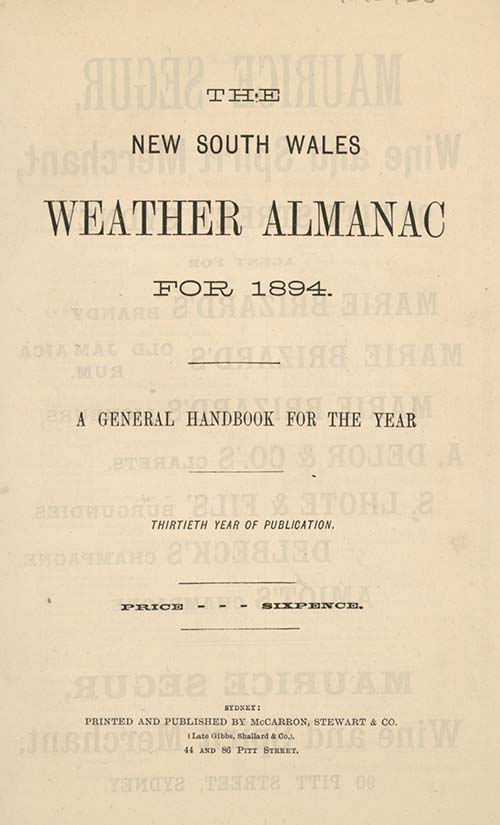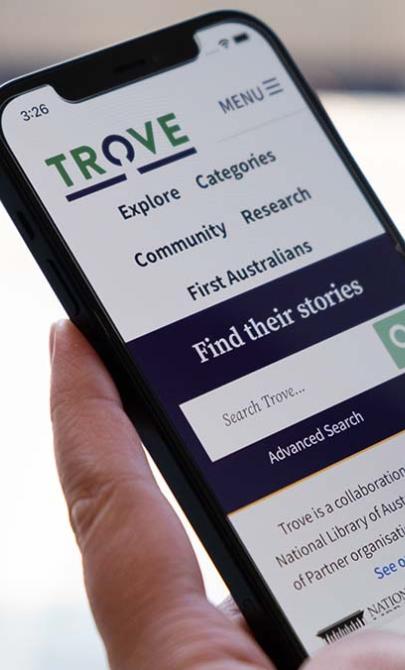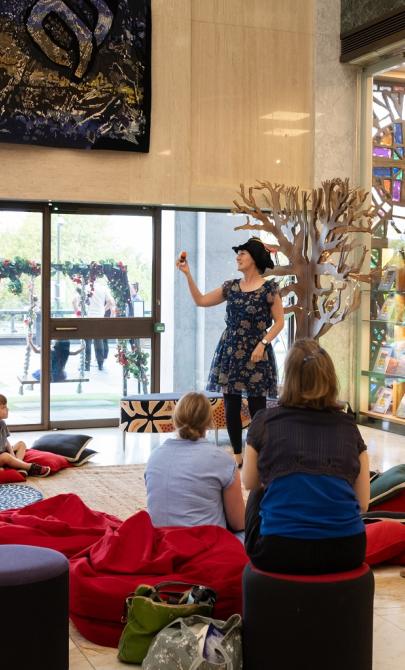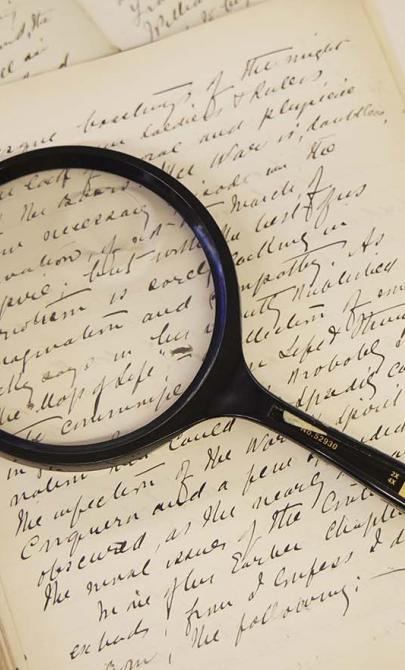Recording weather
Colonial weather forecasting through almanacs
In colonial Australia, there was a useful household book called an almanac. It contained lots of information, including weather forecasts and pictures of the flags used to signify approaching storms.
As time moved on, almanacs were replaced by radio, television and the internet. It is interesting to study an old almanac to see that right back to the 1800s, people sought information to be well prepared for everyday living. The weather information in this almanac included detailed lists about the seasons, moon phases, eclipses, tidal movements, heatwaves and storm forecasting.

New South Wales weather almanac for ... : a general handbook for the year, 1894, nla.gov.au/nla.obj-406743496
Learning activities
Activity 1: Get ready!
The almanac helped households prepare for incoming weather. Divide the class into four groups. Assign each group one natural disaster: flood, bushfire, thunderstorm or cyclone.
Ask students to research survival strategies for their assigned disaster, including:
- preparing the home
- wearing appropriate clothing
- finding the best shelter
- preparing a survival kit
- contacting emergency services
Each group creates a poster or brochure summarising their findings.
Activity 2: How hot is hot?
Measuring and recording temperature can be challenging. Conduct this temperature measuring experiment:
- Place two identical thermometers outside: one in shade and one in full sun. Leave for 30 minutes.
- Record the temperatures shown on both thermometers.
- Then place both thermometers in full sun again. Cover one with black paper and the other with white paper. Leave for 30 minutes.
- Record the temperatures again.
Discuss the temperature differences and what these results tell us about measuring air temperature. Have students write a short report on their findings.



